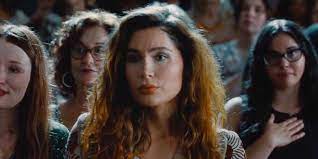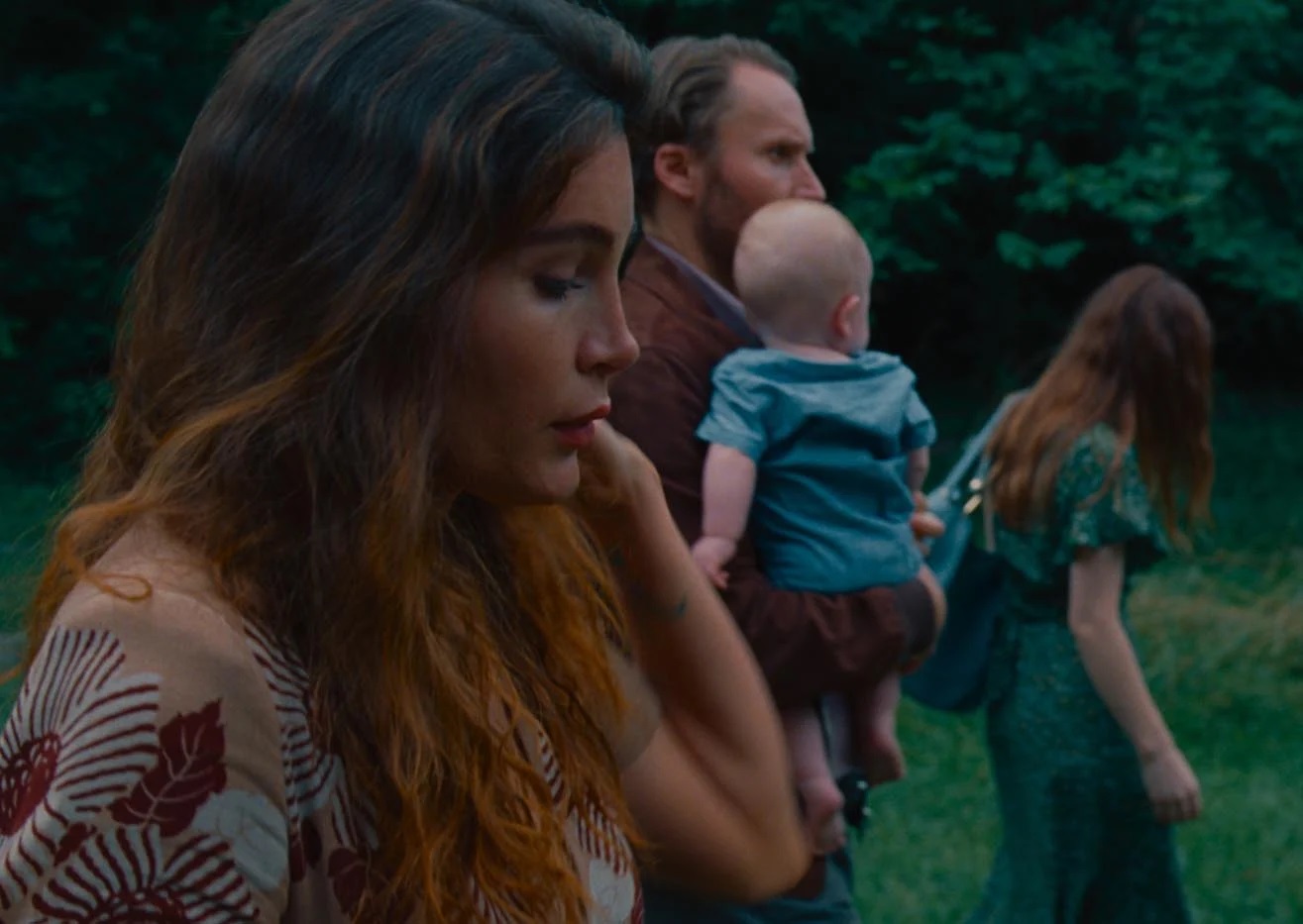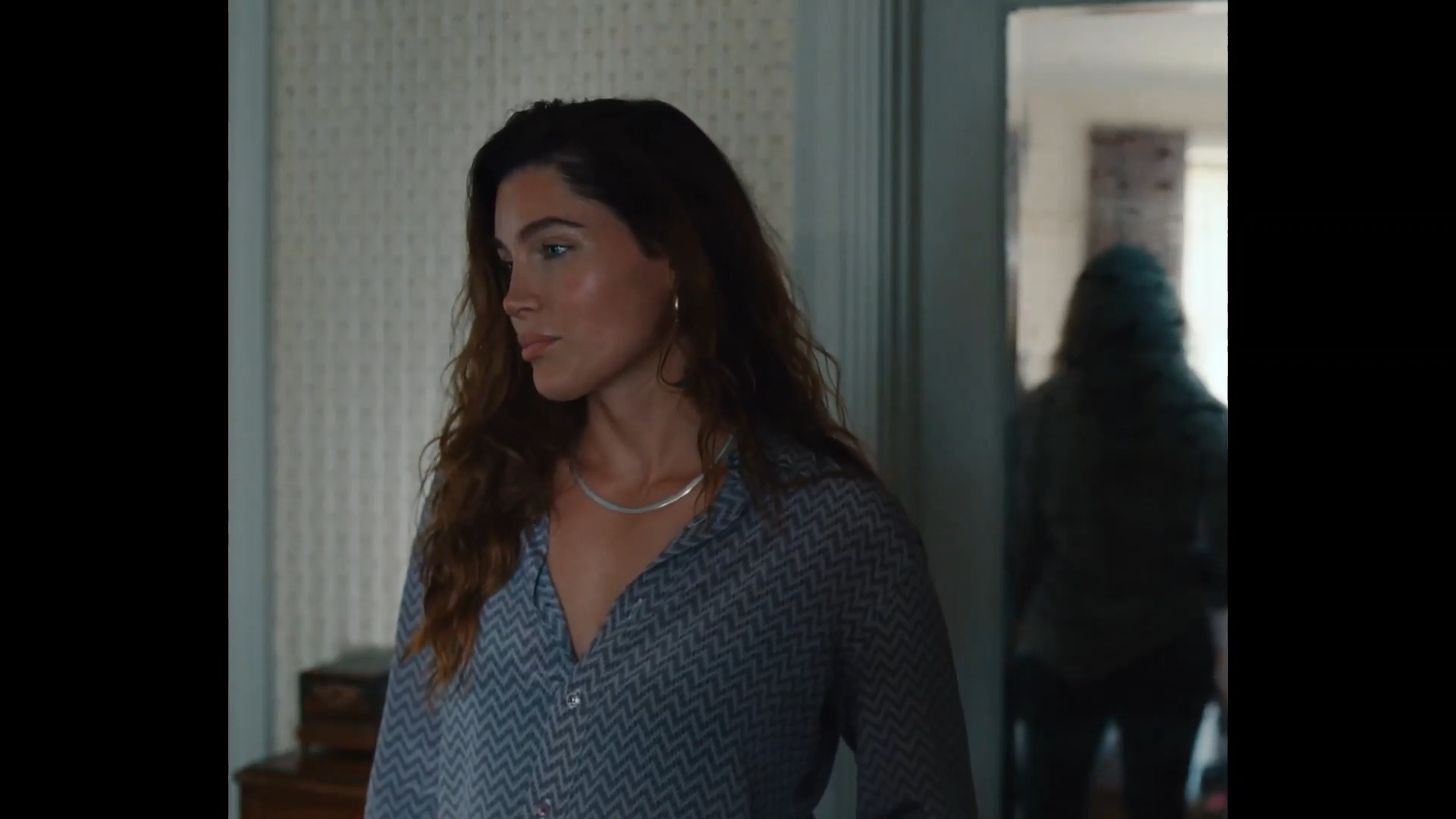Monica may be one of the sparest scripts I have ever seen put to film. The story itself is scarcely more than a classic trope whittled down to its most slender thread—the nostalgia/anti-nostalgia tale filtered through a very specific lens of estrangement. It’s a pared-to-the-bone narrative that might be more accurately described as a kind of frame for a film portrait, which is what Monica—not unlike Andrea Pallaoro’s two preceding films (both co-written with the same writing partner, Orlando Tirado), Medeas (2013) and Hannah (2017)—essentially is.

It’s not merely by coincidence that we repeatedly see Monica (Trace Lysette, in a strikingly subtle yet authoritative embodiment of the role) framed in car windows, doorways or other passageways, and in one or two instances mirrors. The film’s producers opted for a narrower, almost 1:1 aspect ratio, rather than the wider, more conventional 1.85-2.35:1 (the standard Panavision) ratio)—sharpening this sense of a moving, framed silhouette. The framing heightens the viewer’s sense of the shifting conditions and contingencies of Monica’s passage through the actualities of her present-day life in Los Angeles and her return—effectively a 180 degree reversal—to the Midwest suburb that was once her home.
A call from her estranged brother’s family alerts her to her mother’s terminal illness—and the attendant complications that compel them to contact her. This becomes a fraught transit in every sense—compelling her to retrace in reverse the trauma-scarred passage of an early and abrupt emancipation preceding eventual gender transition, and marked by emotional and physical ambiguities and moments of ambivalence at every turn. Fully transitioned, Monica is nevertheless a woman still finding her way—with the viewer following frame by frame.
The lighting gives further emphasis to the conditional faceting of her life. Monica seems to be constantly emerging from a kind of half-lit atmospheric glow or half-shadowed interior into a hazy, not quite daylight. Our first glimpse of her is emerging from what appears to be a tanning booth at a spa or salon. We see her briefly outdoors in the next scene, where she pauses to make a phone call before exiting her parking spot—again in profile, even as a curious stranger approaches her from the rear—checking out her car or her, we can’t be sure; but we get a sense that this is not the first time Monica has dealt with a random stranger’s curiosity.
At her apartment, she parts a glass beaded curtain as she moves toward the foreground to take a call. The light is soft and the color palette, though frequently in amber or jewel tones, is subdued. It’s as if the DP, Katelin Arizmendi, is building a shimmering soft-focus, half-tone portrait—which makes sense because that’s what this is. It’s about shifting the focus to the who and not the how or what about it. There’s a balance struck between the guarded and unguarded; it’s a balance that might conceivably be critical in certain situations—especially driving through the so-called American ‘heartland’ (‘whose’? I always want to ask. The indigenous tribes who once roamed and settled this terrain? The wild horses, cougars, prairie dogs, birds, reptiles, etc. who wandered or lingered here?).

Yet the most fraught moments may be the most distanced, the most disconnected: the urgent voicemail to an estranged friend or lover; the suspicious response to a phone call (“How did you get my number?”). We hear the sense of loss and distance, and above all the need for connection in Lysette’s voice. But also—especially in the scenes with her family—its inverse: Monica’s reticence to impose her presence, her identity on them, and especially her mother, Eugenia (Patricia Clarkson—brilliant in a narrowly constrained role), the casual but slightly stiff, almost self-effacing neutrality. “Hey ….” She might just be an extra hand from her mother’s hospital to relieve the family’s hired caregiver. (No point in letting her know….) It’s the easy default—and one that any trans person would be familiar with.

There are inevitably breaking points—between Monica, her mother, her brother, and his wife. Patience wears thin, synapses don’t fire, parts wear out, stuff breaks down. Monica crosses that threshold on more than one level (breakdowns—medical or mechanical—never help). But ultimately connections and re-connections are made. Late in the film, in a ‘some things never change/some things stay the same’ moment (Chrissy Hynde always knew how to steal from the best), an exhausted and emotional Monica climbs into her mother’s bed—calming herself as much as her mother. In one of the penultimate scenes we see Monica assisting Eugenia with her makeup, powdering her cheeks, delicately applying lipstick—restoring her ‘identity’ in a compact mirror (a ‘frame-within-a-frame’ shot), a crushingly ironic moment of acknowledgment and acceptance. But the real connection, conveyed with both intimacy and urgency, is with her brother’s children. Observing her brother’s very young son, Brody (Graham Caldwell) shakily rehearsing (of all things) the national anthem to be performed for a school assembly, she gives him a pep talk and gifts him with a personal talisman. He falters in the last bars, but delivers the signature closing with a sincerity that sends the audience to its feet.

Not everyone will find the ending satisfactory—it’s a film portrait, but an unfinished one. This, too, may be intentional—an unanswered question for all three (if we include her brother Paul’s wife, Laura (Emily Browning)) ‘unfinished’ women. So what does it mean to be Monica? It means to be free and brave and beautiful and generous in a world where such characteristics and conditions remain imperiled.
Monica opens wide Friday, May 19, 2023—in the Los Angeles area at the Laemmle Glendale, NoHo, and Monica Film Center theatres.



















0 Comments